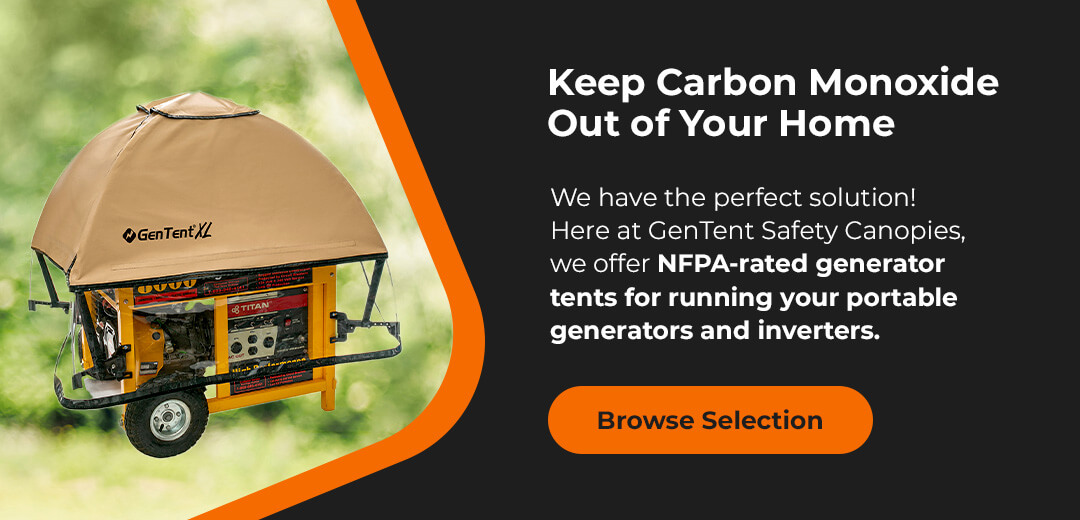Carbon Monoxide In and Around Home
Posted by Kristen S. on Oct 10th 2023
Home Carbon Monoxide Sources
Carbon monoxide is a gaseous product that many combusting appliances release. The gas is colorless and odorless, adding to the danger of carbon monoxide poisoning. Many homeowners won’t know they are in contact with this toxic gas until symptoms occur. Accidental carbon monoxide poisoning leads to an average of 400 deaths per year in the U.S. and is believed to be drastically misunderstood due to challenges with diagnosis, medical and first responder coding. It is crucial to know what causes carbon monoxide in your house.
How Can Carbon Monoxide Get in Your Home?
Several common household appliances emit carbon monoxide as you use them. Machines or appliances that burn fuel release carbon monoxide as a product. Homeowners with gas-powered appliances, fireplaces and garages attached to the main house are at risk of coming into contact with carbon monoxide. It is essential to know the most common sources of carbon monoxide in your home.
Appliances
There are a few gas-powered appliances that release carbon monoxide, including:
- Water heaters
- Furnaces
- Boilers
- Stoves
These appliances experience carbon monoxide leaks if poorly installed or require maintenance. If your home is not well-ventilated, these leaks can lead to carbon monoxide poisoning.
Fireplaces
Wood-burning stoves, ovens and fireplaces release carbon monoxide as a product. It is essential to use fireplaces in ventilated areas with doors and windows to allow the smoke and carbon monoxide to escape.
Garages Attached to the House
Cars and motorcycles produce carbon monoxide, and many homeowners have their garage attached to the main house. If your garage has a door leading into your home, the carbon monoxide can enter your home, putting everyone at risk of carbon monoxide poisoning. Never idle your vehicle in an attached garage.
Generators
Homeowners should only operate their generator at the recommended 20 feet away from your home to prevent carbon monoxide from entering. However, snow, strong winds and rain tempt many homeowners to bring their generators indoors, putting them at risk of carbon monoxide poisoning.
How to Tell if Carbon Monoxide Is in Your House
Homeowners are usually aware of gas leaks due to the unpleasant smell. However, since carbon monoxide is odorless, you won’t know when it is in your home. Installing a carbon monoxide detector is the best way to monitor life-threatening carbon monoxide levels in your home. However, here are a few other things to look for:
- Yellow and orange flames: Check your gas-powered appliances' flames to ensure they are still blue since yellow or orange flames indicate more carbon monoxide in the air.
- Faulty pilot lights: A furnace's pilot light will keep blowing out when carbon monoxide levels are high.
- Slow-burning flames: When there is too much carbon monoxide in the air, solid fuel flames burn slower.
It is also essential to keep an eye on your family members for signs of carbon monoxide poisoning. Often, these symptoms are the first sign that your home contains too much carbon monoxide. Take immediate action if you or your family experiences symptoms such as:
- Nausea
- Headaches
- Dizziness
- Tight chest
- Breathlessness
- Fainting
- Confusion
If anyone in the home experiences the above symptoms, evacuate and seek medical attention immediately.
Keep Carbon Monoxide Out of Your Home
You can manage carbon monoxide levels in your home by keeping it well-ventilated and maintaining your gas-powered appliances to ensure there are no leaks. Keeping your generator at the specified 20 feet away from your home while running is also essential to prevent carbon monoxide poisoning. Harsh weather conditions may lead you to search for solutions to keep your generator out of the rain, wind, and snow.
We have the perfect solution! Here at GenTent Safety Canopies, we offer NFPA-rated generator tents for running your portable generators and inverters. That means you can keep your generator outside so it won’t harm anyone in the house. Browse our selection of inverter and portable generator covers!

